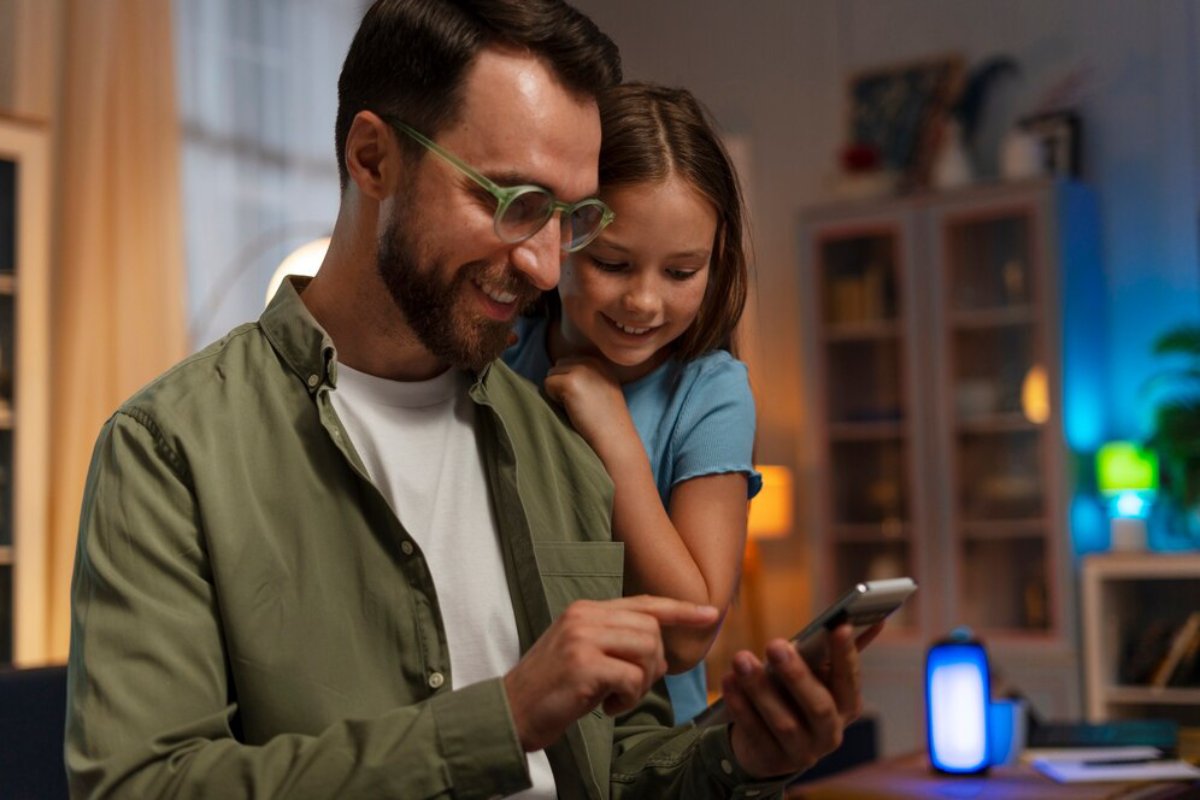
Modelling Healthy Tech Habits as Parents
In today’s digitally driven world, technology isn’t just a tool—it’s a lifestyle. Smartphones, tablets, smart TVs, and wearables are now part of our daily lives. For kids in this environment, screens aren’t just extras—they’re part of life. As parents, our tech habits shape how our kids will use it. Every scroll, tap, and glance at notifications is watched closely by little eyes.
Modelling healthy tech habits is about more than limiting screen time. It’s about showing purpose, setting digital limits, and balancing online and offline life. Kids as young as two imitate adult tech behaviours. This means parents are key in how technology is seen, used, and valued at home.
In this blog, we discuss why healthy tech habits are essential. We share expert tips, highlight common mistakes, and provide practical strategies. These will help your family thrive in the digital world.
Key Benefits
1. Setting a Positive Example
Children learn by watching. If you reach for your phone every time there’s a lull in conversation, they will likely adopt the same habit. Others will follow you when you use tech for learning, creativity, or connection.
Modelling healthy behaviour means showing that devices are tools, not crutches. This might include:
- Turning off notifications during meals and conversations.
- Using your phone to look up facts together during homework or family trivia nights.
- Choosing digital content mindfully, such as documentaries, educational games, or music exploration.
When children see you being deliberate in your tech use, they’re more likely to adopt those same values.

2. Encouraging Balanced Screen Time
The American Academy of Paediatrics warns that too much screen time can lead to attention issues, sleep problems, and reduced physical activity. However, the goal is balance, not elimination.
Children who observe parents maintaining healthy tech boundaries are more inclined to self-regulate. This might mean:
- Reading physical books before bed instead of using e-readers or tablets.
- Engaging in outdoor activities after school instead of turning on the TV.
- Understanding that tech is a tool for productivity, not passive consumption.
Your actions show that real life is out there, beyond the screen. It’s worth getting involved.
3. Promoting Digital Literacy and Safety
Teaching kids responsible online behaviour is one of the best ways to help them become digitally literate. This includes:
- Discussing privacy settings and showing how to adjust them.
- Avoid oversharing or posting inappropriate content yourself.
- Demonstrating how to respond respectfully online and deal with conflict.
Engaging in honest discussions about cyberbullying, phishing scams, and misinformation empowers kids. A 2023 Common Sense Media report unveiled a surprising statistic: children whose parents emphasise digital safety are 40% more likely to identify online harassment. These talks boost critical thinking and help kids safely explore the digital world. We create an open dialogue, which helps the next generation avoid dangers and succeed online.
4. Building Stronger Family Connections
Family life can suffer when screens dominate shared spaces. Creating moments of digital disconnection reinforces the value of human connection. The Journal of Marriage and Family shows that tech-free dinners and shared activities boost family bonds and communication.
Healthy tech habits encourage togetherness. Unplugged moments create lifelong memories. These times matter whether it’s game night, a tech-free road trip, or cooking dinner together.
Additional Expert Tips & Common Mistakes to Avoid
Best Practices for Modelling Healthy Tech Habits
- Lead by Example
- Walk the talk. If you limit your child’s device use but are glued to your phone during family time, the message won’t stick.
- Create Tech-Free Zones
- Make the dining room, bedrooms, or even the car screen-free areas. These boundaries help children compartmentalise tech time and family time.
- Establish Tech-Free Times
- Introduce predictable “screen breaks,” such as no screens before school or after 8 p.m. on weekdays. Use this time to bond, read, or reflect.
- Use Apps Mindfully
- Use wellness tracking apps or digital well-being dashboards. They help you think about your screen habits. Share your insights with your kids and encourage them to do the same.
- Involve Kids in Creating Digital Rules
- Children are more likely to follow boundaries when they help create them. Collaborate on tech rules and consequences together.
Common Mistakes to Avoid
- Inconsistent Rules
- When rules change based on convenience or mood, kids receive mixed signals. Be consistent and clear about digital boundaries.
- Using Tech as a Reward or Punishment
- While tempting, tying screen time to behaviour can create emotional dependency on devices. Instead, emphasise the value of balance.
- Not Monitoring Your Own Screen Time
- If you’re binge-scrolling or constantly texting, your kids will notice. Practice self-awareness and try reducing non-essential usage.
- Neglecting Education on Online Safety
- Simply blocking websites isn’t enough. Teach kids about online safety. Discuss scams, trolls, and online predators. Also, explain that digital content lasts forever.
Advanced Insights
Understanding the Impact of Parental Tech Habits
A 2022 study by Boston Medical Center found that kids act out more when parents use smartphones and show more frustration. These findings show that using tech, even passively, can affect our emotional availability and impact the quality of our relationships.

The Role of Digital Detox
Digital detox doesn’t mean throwing away all devices. Instead, it involves scheduled breaks to reset and recharge. Try:
- Screen-Free Sundays: Pick one day each week for offline activities. Enjoy board games, go for hikes, try cooking challenges, or visit a local park.
- Digital Sabbaticals: Every three months, unplug for a weekend trip or camping adventure.
- Reflection Rituals: Finish each detox period with a family talk. Discuss what you noticed, like better sleep, stronger connections, or new creative ideas.
Encouraging Mindful Tech Use
Mindful tech use means paying attention to why you pick up your device and how it makes you feel. Encourage your kids to ask themselves:
- “Am I using this because I’m bored?”
- “Is this helping or hurting my mood?”
- “What else could I be doing with this time?”
Mindfulness builds intention, and intention builds healthy habits.
Utilising Parental Controls (With a Caveat)
Parental controls help monitor app usage, screen time, and content exposure. However, avoid using them as your sole parenting strategy. Instead, combine them with regular check-ins and age-appropriate conversations.
Some useful tools include:
- Apple Screen Time or Google Family Link for device management.
- Bark or Qustodio for app monitoring and alerts.
- Circle for network-level content filtering.
Conclusion: Modelling Healthy Tech Habits as Parents
As a parent, modelling healthy tech habits is one of the best ways to guide your kids in the digital world. Your daily actions can shape how kids see technology. They also teach self-discipline, safety, and mindfulness, which can help create a tech-savvy and emotionally balanced generation.
Instead of vilifying screens, let’s teach our kids how to coexist with them thoughtfully. Be intentional, be consistent, and be human.
Start today:
- Identify one area in your daily routine where you can cut back on tech.
- Set a goal for a tech-free family activity this week.
- Start talking with your kids about how they feel when using their devices.
When you are a role model for your children, you help them make healthy digital choices for life.


